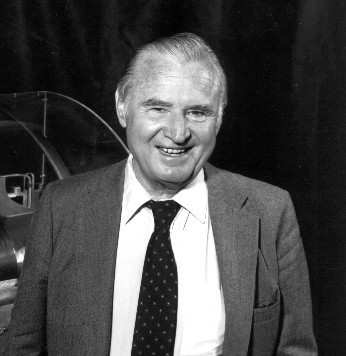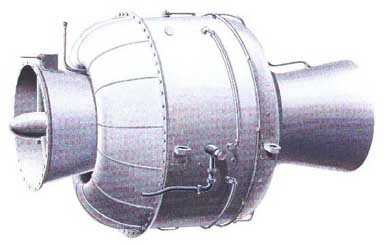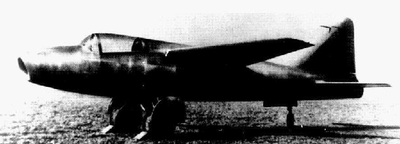The Invention Of The Jet Engine
The Air Force and University of Dayton leaders Friday will
celebrate the 65th anniversary of the most significant aviation
achievement since the Wright brothers' powered flight.

In 1939, the first operational jet engine, designed by former
University of Dayton mechanical engineering professor Hans von
Ohain, roared over a German airfield at 435 miles per hour. Great
Britain's Frank Whittle invented the jet engine, and received a
patent in 1930, but did not perform a successful test flight until
1941.
Hans von Ohain's career will be celebrated with a ceremony and
lecture from 9:30 -10:45 a.m. at Wright-Patterson Air Force Base's
Research Lab/Propulsion Directorate Building 18. A luncheon follows
from 11:15 a.m. to 1:15 p.m. in Kennedy Union's presidential suite
on UD's campus. UD leads all Ohio universities in aerospace
research funding received, according to the Ohio Aerospace
Institute.
"Dr. von Ohain helped revolutionize the world's transportation
system, transformed the relationship between people from various
nations and made possible the global economy we live in," said
Dilip Ballal, director of UD's von Ohain Fuels and Combustion
Center, the largest center of its kind in the United States.
Since its dedication in February 2003, the von Ohain Center has
been awarded millions in state and federal grants to find better
and cheaper jet fuel alternatives.

Hans von Ohain's list of honors is lengthy, including the Air
Force Systems Command Award for Meritorious Civilian Service and
the Department of Defense Distinguished Civilian Service Award. He
also was inducted into the International Aerospace, Engineering and
Sciences, and National Aviation halls of fame.
Col. Michael Heil, director of the Air Force's propulsion
directorate, and Alan Garscadden, the propulsion directorate's
chief scientist, will present a replica of Heritage Hall to von
Ohain's widow, Hanni. Heritage Hall is a building on the base
dedicated to Hans von Ohain as a tribute to the history of the Air
Force Research Laboratory.
Garscadden will present "Propulsion Challenges: Past, Present
and Future" and will be honored with a plaque by Hanni von
Ohain.
The program finishes with a luncheon at UD during which Ballal
will offer an update on the von Ohain Center's progress. The von
Ohain center has received two $1.1 million grants - from a state of
Ohio Wright Center of Innovation to develop better, cheaper fuels
for military and commercial aircraft and from Cleveland's NASA
Glenn Research Center to help develop a more efficient and less
polluting combustor for jet engines.

The center also won a five-year, $31.5 million Air Force
contract to improve conventional fuels and develop advanced fuel
additives and fuel combustion technologies for advanced aircraft
and aerospace systems.
Von Ohain brought his technology and expertise to the United
States in 1947 as part of Operation Paperclip, a Cold War
initiative that brought German scientists to this country to
research advanced propulsion systems at Wright-Patterson Air Force
Base.
He eventually rose to the position of chief scientist at the
Aerospace Research Laboratories and Aero Propulsion Laboratory,
which is now the Air Force Research Lab Propulsion Directorate.
After retiring from the Air Force in 1979, von Ohain worked at UD
and was a Lindbergh Professor at the National Air and Space Museum
in Washington (DC).
Von Ohain died on March 13, 1998, at his home in Melbourne
(FL).
 Unfortunate... ANN/SportPlane Resource Guide Adds To Cautionary Advisories
Unfortunate... ANN/SportPlane Resource Guide Adds To Cautionary Advisories ANN FAQ: Turn On Post Notifications
ANN FAQ: Turn On Post Notifications ANN's Daily Aero-Term (04.29.24): Visual Approach Slope Indicator (VASI)
ANN's Daily Aero-Term (04.29.24): Visual Approach Slope Indicator (VASI) ANN's Daily Aero-Term (04.28.24): Airport Marking Aids
ANN's Daily Aero-Term (04.28.24): Airport Marking Aids ANN's Daily Aero-Linx (04.28.24)
ANN's Daily Aero-Linx (04.28.24)





